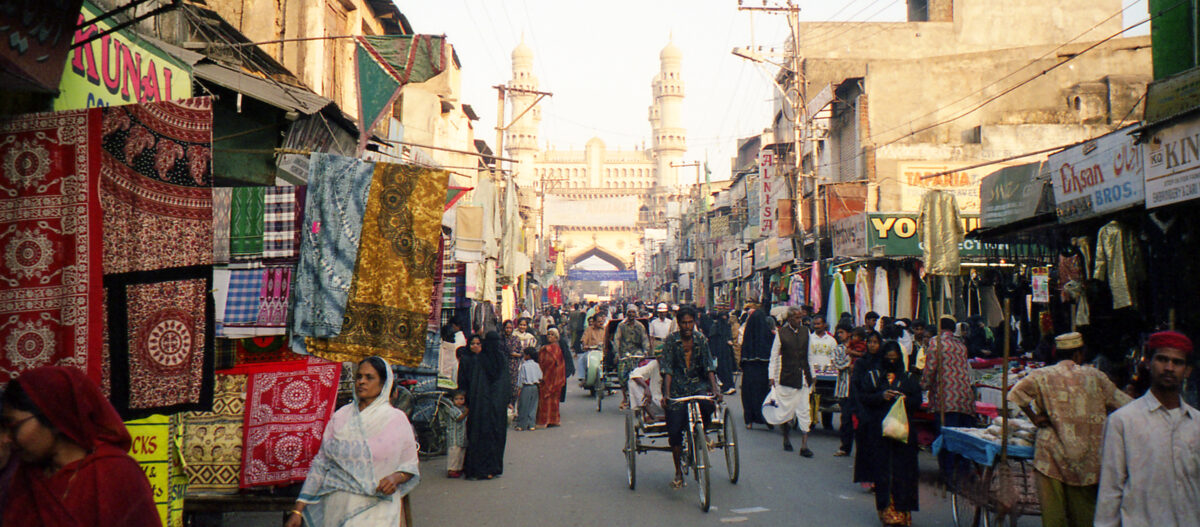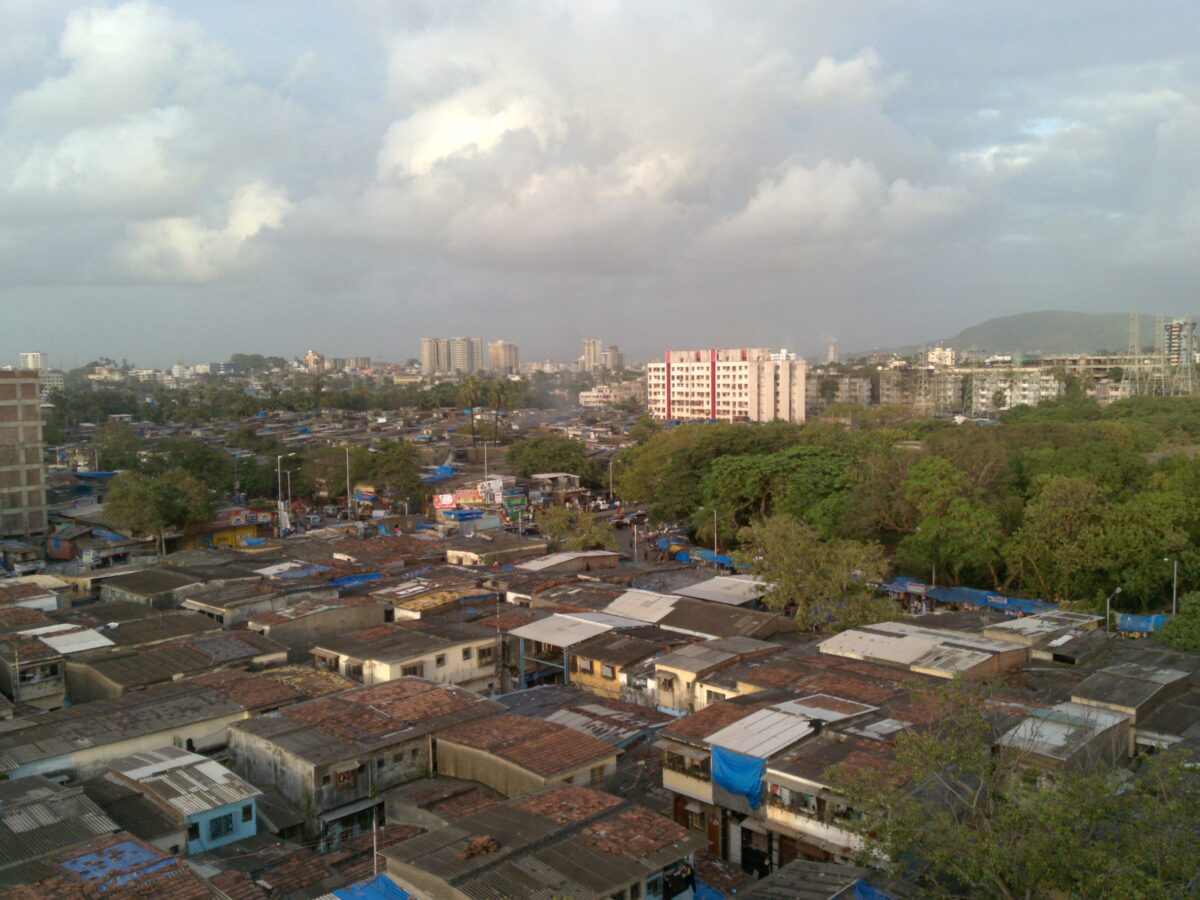In Shadow Cities, a journalistic study of six large slums across the world, author Robert Neuwirth recollects being interviewed at Dharavi in Mumbai by a reporter from a major newspaper. The reporter asks him if slums constitute a city within the city. Neuwirth reflects on the question, which sounds reasonable, but reveals a clash of paradigms once contextualised by the city's demographics.
Neuwirth observes 55 per cent of Mumbai's residents live in informal settlements, whereas the wealthy form small enclaves. Yet, it is the city of the wealthy that official urban planning centres on with its market-driven delineation of distinctly zoned land parcels developed through explicit statutory procedures. Public discourse on the city is shaped by this imagination, recognised as 'the city', whereas informal settlements, despite containing a majority of the people, are treated as an aberration whose marginality is portrayed as 'the city within the city'.
A traverse of any Indian city demonstrates this fundamental disconnect in the substantial percentage of building stock unquestionably produced by processes outside the paradigm of master plans and building codes, affecting close to half or more, of the urban population. The poor survive in the Indian city because the reach of master planning is weak, granting them space for systems of informal tenure that underpin their survival. Forced to live outside legal sanction, the concomitant vulnerability to dispossession condemns them to a degraded quality of life.
How is it that India's paradigms of urban planning, governance and discourse persistently remain unaware of the extent to which they derecognise, and consequently criminalise, much of the city's population? This is possible because we do not see the city in terms of universal human rights. An evaluation on these terms would immediately foreground the devastating marginalisation that prevails, whereas an abstracted model of urban appearance, divorced from rights and desirable to the elite, enables the persistence of this marginalisation.
The notion of 'The Right to the City', as a conceptual call for a rights-based urban paradigm, was first articulated by the French philosopher Henri Lefebvre in 1968 and has subsequently been taken up by theorists and activists like David Harvey and many others. This call connects rights with spatial entities, requiring an examination of how universal rights are spatialised.
Spatialisation of human rights
Any principle of universal rights remains an abstract idea until rendered tangible in law by a spatial entity having the authority to implement it. The nation state fulfils this role through a constitutional bill of rights applicable to its territory. Political philosopher Hannah Arendt, in The Origins of Totalitarianism, posits this does not solve the problem totally for the crisis remains of the refugee, a person deprived of a state and left solely with the condition of being human, observing that this gap in the spatialisation of rights creates a world that finds “nothing sacred in the abstract nakedness of being human”.
The gap in spatialising rights is not confined to the refugee, being far more prevalent at sub-scales within the nation state. While rights are articulated at the scale of the nation, they must be negotiated within the routines of daily life at the scale of the city and village. When the city orients its plans and protocols toward symbols of modernisation divorced from a rights-based evaluation, then the city too becomes a space that finds “nothing sacred in the abstract nakedness of being human”.
This predicament is compounded in India by an embedded schism within its economy. Economic development has been viewed the world over as a process that weans labour from an informal pre-modern sector to one that is formal and modern. This shift requires an enabling state implementing welfare schemes for universal education, healthcare, housing, infrastructure, and agricultural extension, backed by policy liberating the availability of capital. Given the Indian state's major shortcomings on this count, the Indian economy traps most labour at, or below, subsistence levels within the informal sector — over 80 per cent of all employment and over 65 per cent of non-agricultural employment is within this sector. As the formal sector is considered representative of modernisation, the portion of the city that it produces is upheld as the desired paradigm, becoming the focus of master planning and governance. The portion of the city produced by the informal sector is seen as an obstacle to modernisation, and consequently, the human rights of the substantive population it contains do not get adequately spatialised within the prevailing development paradigm.
The movement to a paradigm that spatialises universal rights across the Indian city is more than one of mere political will: there are structural hurdles to be overcome.
Localising rights in the Indian city
The first foundation needed is the political and financial empowerment of local city governments to implement rights. This is far from the case in India and needs urgent reform. Even with empowered city government, we come face to face with another problem inherent in all urbanisms: how can people be recognised within cities as bearers of rights? At the scale of the nation state, rights are predicated on a recognition of citizenship; a category held relatively stable by immigration protocols. However, the city thrives on migration and mobility, and transferring the same concept of citizenship to the urban scale will create more problems than it solves.

A city allows greater anonymity, and consequently greater freedom.
In a village, one’s behaviour is constrained by the constant gaze of social tradition.
Photo: Creative Commons
It would require that governance track migration to continually redefine the recognition of current residents of the city, raising the danger of an undesirable surveillance state. More significantly, it would undermine one of the city's most positive features: a creative capacity that rests on anonymity. Compared to the village, where one's behaviour is constrained by the constant gaze of social tradition, the city allows greater anonymity, and consequently greater freedom. With rich connections enabled by the city's scale and density, this freedom can be innovatively leveraged into forms of productive association. Urban planning has lost its roots in this humanistic view of the city and has retreated into cocoons of scientific purity.
The right to the city must eschew a localised recertification of citizenship and base itself on an ongoing and inclusive politics of recognition flowing from the mere act of inhabiting the city. This raises two questions: At what scale should recognition primarily occur? How do we resolve the paradox of facilitating recognition while preserving the potential of anonymity?
As individualised recognition is infeasible at immense scales such as the metropolis, on the first question of scale, a key strategy must be decentralisation to a scale that empowers recognition. From here, the scale hierarchy that operates, for both planning and governance, should be governed by the principle of subsidiarity which states that the lowest level in a hierarchy does the maximum possible, and what cannot be done at that level is delegated upward in the hierarchy; a far cry from the top-down models that prevail today.
On the second question of the paradox of recognition, it is crucial that recognition eschew pinpointing identity to be predicated on a construal of development as inclusively offering freedom and the abolishment of 'unfreedoms' such as poverty and deprivation of rights; an impulse, identified by Amartya Sen in Development as Freedom, as one that seeks equality of opportunity over equality of status.
This asks that we come to terms with the nature of an urban public realm that enables such recognition.
The urban public realm
Urban planning largely assumes a politically passive inhabitant who needs the service of a utilitarian public realm to facilitate movement and avail commerce, consumption, leisure, and technical services such as water supply, sewerage, and electricity. The city is meant to be more than this utilitarian realm: it should be a civic space of politics and rights, promoting engagement between citizens. How does such a realm bind its polity so that it can functionally cohere?
There is a dominant strain of political thought which believes a shared public interest can be uncovered, where discord is eliminated through institutionalised checks and balances and, if distortions of communication are removed, common conviction achieved through rational debate is inevitable. There is a conflicting view that believes pluralism is inevitable, and what is postulated as the public interest masks competing private claims to define it. The evidence of how partial definitions of the city are posited as universal while overlooking the overwhelming marginalisation they entail suggests it is the latter view that prevails.
Consensus and pluralism must be comparatively weighed in reference to the universality of human rights. Consensus is oriented towards the construction of community, where 'community' is defined as a group of people in a place who share key characteristics. A doctrine of rights linked to notions of community means you view rights as grantable to people who, in some essential ways, are similar to you. While the impulse toward community is fundamental to the human condition, universalisation across a spatial polity amounts to a form of tribalism. This has a spill-over impact on the legal system in an indirect influence toward consideration for a law that is based on notions of stable community. Such law prioritises being restitutive rather than egalitarian, and we are seeing a growing body of case law where the preservation of community order takes priority over individualised rights.
Rights are truly universal only when spontaneously granted to people unlike you, sustained by an institutional framework whose scales and protocols are conducive to diversity. Rights must go hand in hand with pluralism and will flourish to their greatest extent where diversity thrives. The city, ingrained with complexity and creative anonymity, becomes a natural site to delineate and expand the reach of rights. It is the space where we most inventively remake ourselves, writes David Harvey in Rebel Cities, and such a remaking will always be constrained if it is not wholly backed by a secure doctrine of universal human rights.
One can go so far as to ask whether such a doctrine is possible without incorporating the right to the city, for only then can we routinely inhabit spaces predicated on recognising what is “sacred in the abstract nakedness of being human”. There is much work to be done on this front, both philosophically and politically, and the urgency of the task in India becomes apparent when we examine her current juncture in history.

Mumbai's Dharavi, the largest slum in Asia, houses a huge urban labour force.
By the middle of this century, India’s urban population will exceed the rural population.
Photo: Creative Commons
The Damocles' Sword of India's urban century
The 21st century is a threshold epoch for India: by the middle of this century, for the first time in history, the urban population will exceed the rural population, and three current collision courses will need to be averted.
First, we have discriminatory urban planning and management paradigms, in which the excluded survive because of the spaces of informality enabled by poor implementation of these paradigms. Increasing urbanisation will create political pressure to expand the reach of planning and management paradigms, as fractured approaches will not respond adequately to needs. Without a shift to a rights-based paradigm, the consequent increase in contestations over urban space can unravel India's polity.
Second, a marginalised population is conducive to political exploitation through mobilisation of vigilante violence in urban areas to serve vested interests, as evidenced in Thomas Blom Hansen's study: Violence in Urban India: Identity Politics, 'Mumbai', and the Postcolonial City. This is aggravated by the relative youth of our population, with large numbers of unemployed and under-employed young men seeing vigilante violence as an effective means for asserting their presence in cities whose dominant paradigms had hitherto rendered them invisible. This has moved beyond the periodic mobilisations for riots and bandhs; it has become ingrained within everyday mainstream politics.
 |
 |
Photo credit: Barinder Basan/Unsplash
Unlike earlier eras of authoritarianism, such as the Emergency in the mid-1970s, that depended primarily on the exercise of state power, current authoritarian politics rests on a tacit partnership between state power and vigilante assertion (Christophe Jaffrelot, Modi's India: Hindu Nationalism and the Rise of Ethnic Democracy). While this may serve short-term political interests of a few, it can become an uncontrollable genie who cannot be put back into the bottle. Without an urgent check from a comprehensive and effective doctrine of human rights, it can degenerate into the breakdown of a democracy of universal suffrage underpinned by the rule of law.
Third, is the rising spectre of climate change. Policy pronouncements, technological fixes, and market impulses are limited in combating this crisis; effective action demands mobilising an entire population into adopting coherent change, particularly in urban areas, given cities are the major consumers of energy. Such mobilisation is possible only through a rights-based approach of universal reach, else the consequent political fractures into islands of self-interest will obstruct effective change. It is the poor and vulnerable who will suffer the worst consequences of climate change, and the consequent political tensions will drive further wedges into an already fragile polity.
How India envisions and implements the right to the city will determine whether she shall swim or sink in the second half of the 21st century.























